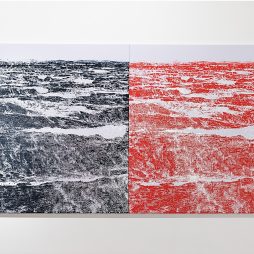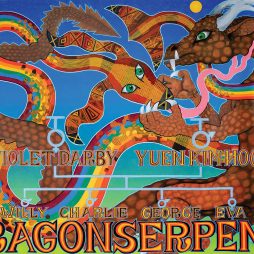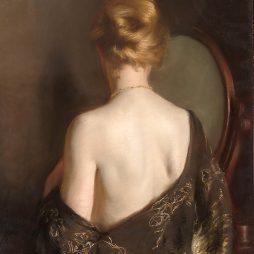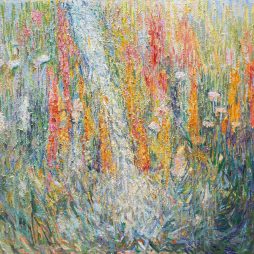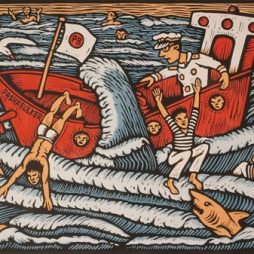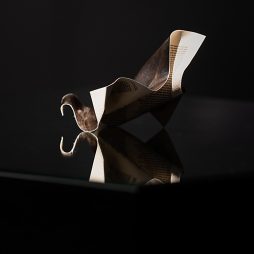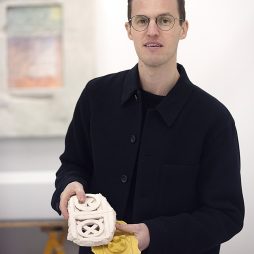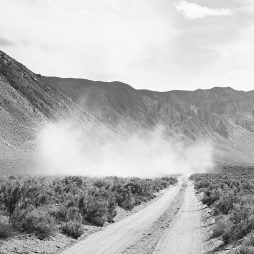Ten Curators in support of Khaled Sabsabi: Edition 3
Artist Profile will be publishing ten pieces of text from international and local curators as a series of editions. These distinguished curators provided their words voluntarily in support of Khaled Sabsabi and curator Michael Dagostino after Creative Australia “honoured Khaled and dishonoured him” (Simryn Gill, 7.30 Report) in less than a week of announcing Sabsabi and Dagostino as the 2026 Venice Biennale team to represent Australia.
The call for the reinstatement of Sabsabi and Dagostino has been loud and strong from within the visual arts community here and abroad. The curators in support of Sabsabi have previously written on and curated his artwork.
Blair French is CEO of Murray Art Museum Albury. He was one of the judges for the 2011 Blake Prize for Religious Art awarded to Khaled Sabsabi. As Executive Director, Artspace in 2012 he presented Sabsabi’s installation Mush (2012). ~ Kon Gouriotis, Editor

To seek a moment of quietude amongst the storm of words we need only to return ourselves to Khaled’s work, any one of his works. I return often to the simple community space of Naqshbandi Greenacre engagement (2011) for which he was awarded the Blake Prize for Religious Art. But I’ve written about that work elsewhere.
I also picture myself stepping over the threshold from the waterfront traffic in Woolloomooloo Sydney into a darkened Artspace, a large cube appears suspended in space, vibrating and pulsating with strings of images; the whole room filled with sound. Each of the cube’s four visible sides are animated with streaming fractal-like video frames perpetually running into a central vortex.
These are images of everyday life filmed by Khaled Sabsabi in locations in the Middle East, North Africa, Australia – the busyness, the banality, the mass noise both visual and aural of human interaction; the streets, the places of worship, the gatherings and the communal acts of affirmation and faith. Weaving through this noise of life are the sounds of the cry of the women of the village of Nabatiya in south Lebanon during the annual mourning ceremony of Ashura. Mush (2012) – an energised embodiment of harmonic geometric form, recharging itself with an apparently infinite constancy of motion – holds up in unseen hands more than simply the juxtaposition of everyday material life and an ineffable life of faith and ritual, but their unity as one. On an adjacent wall projected light rotates on a sculptural relief of two overlaid squares, creating an alternating image of square and eight-point square, for the artist a symbol of balance and counter-balance.
Much has been written about the relation of Khaled’s art practice to his wider community practices, and to faith in the widest, most encompassing sense of compassion and connection, all deeply informed by his own Sufi beliefs. This is very much the nexus underpinning Mush and through which it has been extensively written about.
But also here is a documentarian impulse, occasionally but less extensively considered. This impulse in Sabsabi’s practice is not just to reveal what life appears as and is for peoples and communities. It is an impulse to work at conveying contributing conditions – historical, political, economic, cultural. An impulse towards activism insomuch that encouraging mutual understanding is an activist intent; even if that action be as simple as creating of and through art the space and time to sit together, to listen and talk and be together. Mush has a material documentary underpinning, like so much of his work in fact.
Khaled travels, records sound and imagery, takes photographs. But travels also to meet and spend time with people in places that mean a great deal to him, are familiar to him, as well as elsewhere. Never travelling with intents of discovery, but intents to learn, to communicate, to attempt to understand; to seek and to create commonality forged in a respect of particularities of place, culture and belief. Mush is a document of the cacophony of multiple lives transformed into an expression of infinite harmony – a description that can be applied to so much of Khaled’s work, including, we might anticipate, that which Khaled was developing for the Venice pavilion and we can only hope will find another more understanding, respectful home.
Blair French, February 2025

